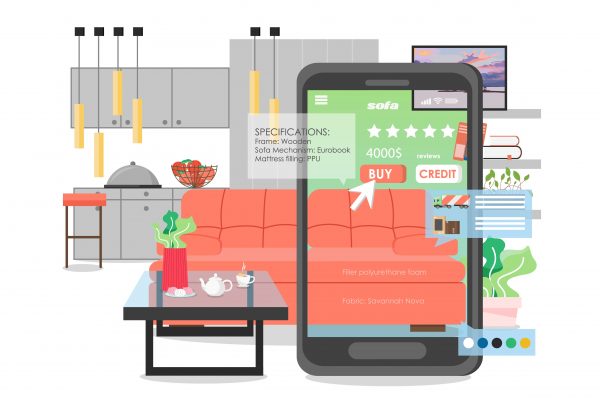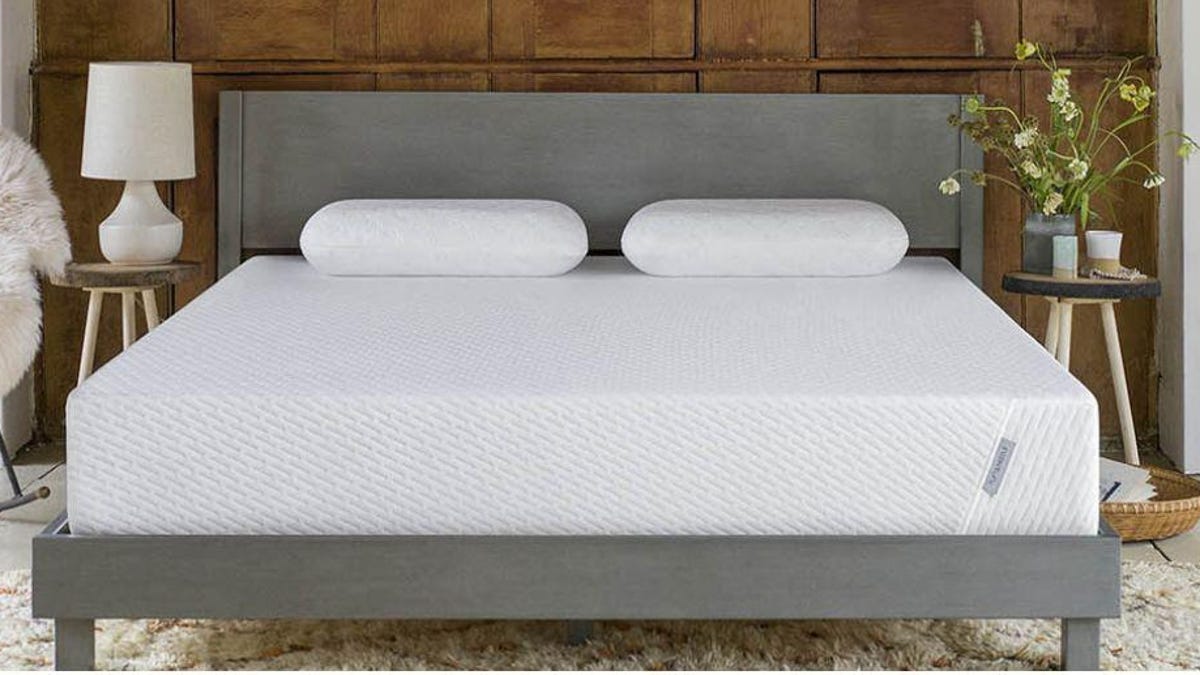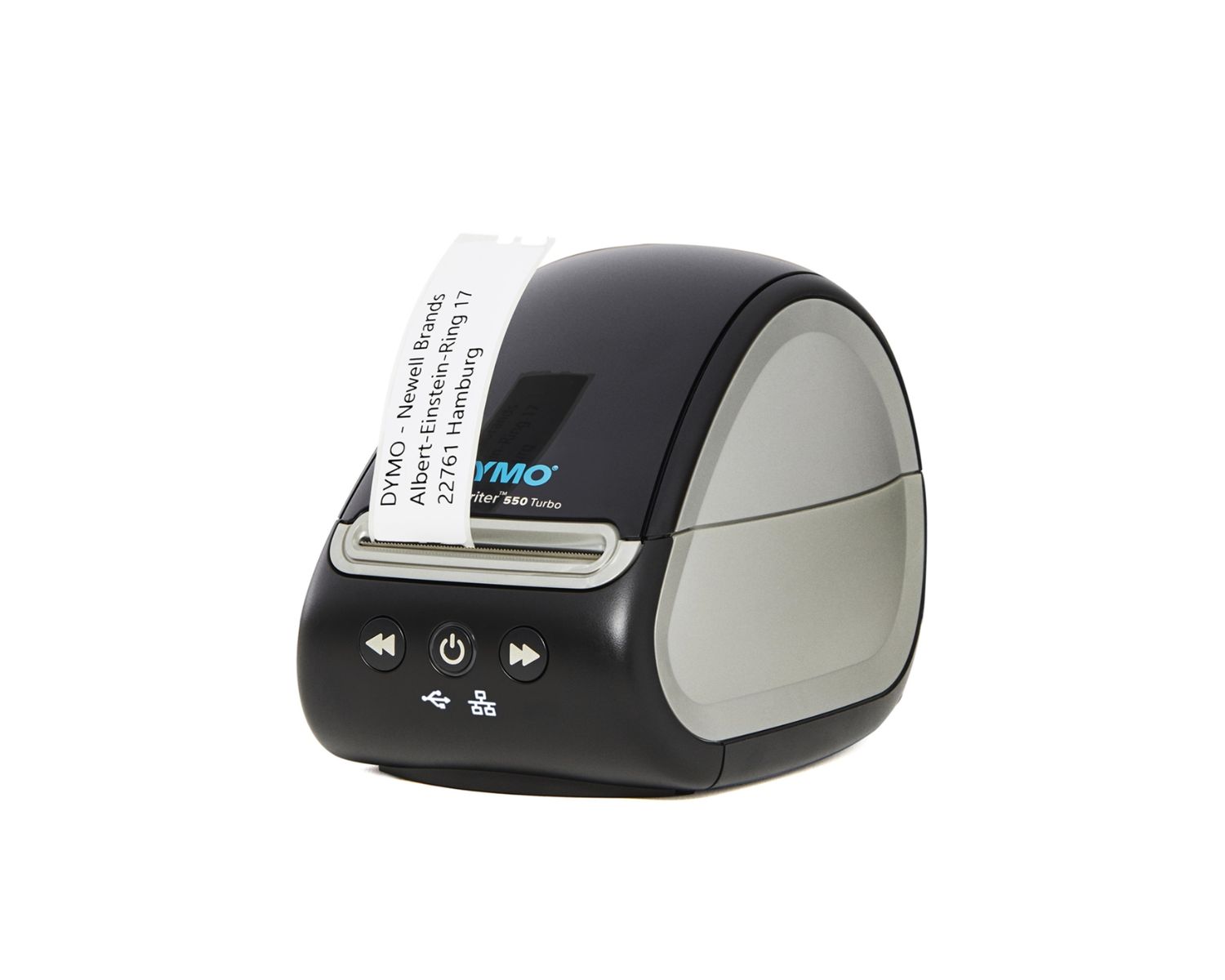

Articles
How To Sell Furniture Online
Modified: January 6, 2024
Looking to sell furniture online? Learn how to maximize your profits by selling your furniture online with our step-by-step guide.
(Many of the links in this article redirect to a specific reviewed product. Your purchase of these products through affiliate links helps to generate commission for Storables.com, at no extra cost. Learn more)
Introduction
Welcome to the world of online furniture selling! With the rise of e-commerce, selling furniture online has become a lucrative opportunity for both established retailers and aspiring entrepreneurs. The convenience and accessibility of online shopping have made it easier than ever for customers to browse and purchase furniture from the comfort of their own homes. If you’re interested in tapping into this market, this comprehensive guide will walk you through the process of selling furniture online and help you establish a successful online business.
Choosing to sell furniture online offers numerous advantages. Firstly, it allows you to reach a wider audience beyond your local market. By eliminating geographical barriers, you can attract customers from different regions and even globally. Secondly, the lower overhead costs associated with online retail can lead to higher profit margins compared to brick-and-mortar stores. Additionally, setting up an online furniture store provides you with the flexibility to work from anywhere, giving you the freedom to manage your business on your terms.
However, selling furniture online does come with its challenges. Competition can be fierce, so it’s crucial to have a well-thought-out strategy to stand out from the crowd. From choosing the right platform to marketing your products effectively, every step of the process requires careful consideration and execution. This guide will provide you with the insights and strategies you need to succeed in the online furniture selling industry.
Whether you’re an experienced furniture retailer looking to expand your customer base or an aspiring entrepreneur with a passion for interior design, this guide will equip you with the knowledge and tools to navigate the online furniture market. So, let’s get started on your journey to become a successful online furniture seller!
Key Takeaways:
- Selling furniture online requires a strategic approach, from choosing the right platform to providing exceptional customer service. Success hinges on adaptability, customer focus, and continuous improvement.
- High-quality product photography, compelling descriptions, and effective marketing strategies are essential for driving traffic and increasing sales in the competitive online furniture market.
Read more: How To Sell Your Furniture
Choosing the Right Platform
When it comes to selling furniture online, choosing the right platform is crucial. The platform you select will determine the overall functionality, design, and ease of use of your online store. Here are some factors to consider when evaluating different platforms:
- Platform Features: Look for a platform that offers the features you need to showcase your furniture effectively. This may include customizable templates, product galleries, customer reviews, and social media integration.
- Design and Customization: A visually appealing and user-friendly interface is essential for attracting and retaining customers. Ensure that the platform allows for easy customization, allowing you to create a unique and on-brand online store.
- Scalability: Consider the long-term growth potential of your business. Choose a platform that can accommodate your expanding inventory and handle increased website traffic without compromising performance.
- Payment and Shipping Options: Make sure the platform integrates with popular payment gateways and provides flexible shipping solutions. Offering a range of payment and shipping options will enhance the shopping experience for your customers.
- Mobile Responsiveness: With the increasing number of people using mobile devices for online shopping, it’s essential that your platform is mobile-responsive. This ensures that your website looks and functions seamlessly across various screen sizes.
- SEO and Marketing Tools: Look for a platform that offers built-in SEO features, such as customizable meta tags and URLs. Additionally, consider if the platform provides marketing tools like email marketing integration, abandoned cart recovery, and discount code functionality.
Based on these factors, popular e-commerce platforms like Shopify, WooCommerce, and BigCommerce are worth exploring. These platforms offer a range of features, customization options, and integrations to help you create a successful online furniture store. It’s essential to take the time to research and compare the platforms to find the best fit for your specific needs and budget.
Once you’ve chosen a platform, you’ll need to set up your online store. In the next section, we’ll guide you through the process of creating an online store for your furniture business.
Creating an Online Store
Now that you’ve chosen the right platform for selling furniture online, it’s time to create your online store. Follow these steps to set up your online store:
- Domain and Hosting: Register a domain name that reflects your furniture business and choose a reliable hosting provider. Your domain should be easy to remember and relevant to your brand.
- Store Design and Layout: Customize the look and feel of your online store to align with your brand identity. Use high-quality images and a well-organized layout to showcase your furniture effectively. Ensure that the design is user-friendly and optimizes the browsing experience for your customers.
- Product Listing: Create detailed product listings for each piece of furniture you are selling. Include clear and concise descriptions, dimensions, materials, and any other relevant information to help customers make informed purchasing decisions.
- Shopping Cart and Checkout: Set up a secure and user-friendly shopping cart system, allowing customers to easily add items to their carts and proceed to checkout. Offer multiple payment options to accommodate different customer preferences.
- Secure Payment Gateway: Integrate a reputable payment gateway to ensure secure online transactions. Customers should feel confident when providing their payment information on your website.
- Shipping and Returns: Implement a clear shipping and returns policy that specifies shipping rates, delivery times, and any conditions for returns or exchanges. Offer options for free shipping or discounted rates to attract more customers.
- Website Optimization: Optimize your website for search engines by incorporating relevant keywords into your product descriptions, headings, and meta tags. Make sure your website loads quickly, as slow load times can deter customers.
- Customer Support: Provide clear contact information and offer multiple channels for customer support, such as email, live chat, or phone. Promptly respond to customer inquiries and provide assistance throughout the purchasing process.
- Test and Launch: Before launching your online store, thoroughly test all aspects of the website, including navigation, payment processing, and mobile responsiveness. Conduct a test purchase to ensure the entire process is smooth and error-free.
Remember, creating an online store is an ongoing process. Continuously monitor and optimize your website to improve user experience and drive sales. Regularly update your product listings, add new furniture collections, and implement customer feedback to keep your online store fresh and engaging.
With your online store in place, the next step is to focus on capturing the attention of potential customers. In the following sections, we will discuss product photography and descriptions, pricing and shipping strategies, as well as marketing and promoting your furniture to maximize your online sales.
Product Photography and Descriptions
When selling furniture online, high-quality product photography and compelling descriptions are key to attracting customers and increasing conversions. Follow these tips to create visually appealing product listings:
- Invest in Professional Photography: Hire a professional photographer or learn to take high-quality photos yourself. Use good lighting, proper angles, and ensure that the furniture is the focal point of the image. Showcase different angles, close-ups of unique details, and lifestyle shots to help customers visualize how the furniture will look in their own spaces.
- Provide Accurate and Detailed Descriptions: Write clear and concise descriptions for each furniture item. Include dimensions, materials used, weight, color options, and any other relevant details. Describe the style, functionality, and highlight any unique features that set the furniture apart from others in the market. Use descriptive language to evoke emotions and create a connection between the customer and the furniture.
- Include Real-Life Context: Feature lifestyle images that show how the furniture can be incorporated into different room settings. This helps customers envision the furniture in their own homes and provides inspiration for interior design.
- Focus on Benefits: While including features is important, emphasize the benefits of the furniture. Highlight how it solves a problem or enhances the customer’s lifestyle. For example, if selling a comfortable couch, mention the plush cushions and ergonomic design for ultimate relaxation.
- Use SEO-friendly Keywords: Incorporate relevant keywords in your descriptions to improve search engine visibility. Research keywords related to furniture styles, materials, and functionality to optimize your product listings accordingly.
- Include Social Proof: Display customer reviews and testimonials to instill trust and credibility. Positive reviews can greatly influence potential customers’ purchasing decisions.
- Offer Product Variations: If your furniture comes in different colors or sizes, clearly indicate the available options and provide corresponding images. This allows customers to make informed choices and reduces the likelihood of product returns.
Remember to regularly update your product photography and descriptions as your inventory changes. Stay consistent with your brand image and create a cohesive visual identity throughout your online store. By presenting your furniture in the best possible light and providing compelling descriptions, you increase the chances of attracting potential customers and ultimately driving sales.
In the next section, we will discuss pricing and shipping strategies for selling furniture online.
Pricing and Shipping Strategies
Determining the right pricing and shipping strategies for your online furniture business is crucial for profitability and customer satisfaction. Here are some strategies to consider:
- Pricing Your Furniture: Research the market and analyze competitor pricing to ensure your prices are competitive. Consider factors such as quality, materials used, and unique features when setting your prices. Take into account your overhead costs, including sourcing, manufacturing, and marketing expenses, to ensure you maintain a healthy profit margin.
- Offer Discounts and Promotions: Attract customers by offering discounts, promotions, or bundle deals. This can be in the form of seasonal sales, coupon codes, or free shipping on certain items. Create a sense of urgency by setting expiration dates or limited quantities for these offers.
- Shipping Costs and Options: Determine how you will handle shipping costs. You can offer free shipping and absorb the cost by factoring it into your product prices, or you can charge customers based on their location and the weight/size of the furniture. Consider partnering with a reliable shipping carrier or negotiate discounted rates to minimize shipping costs.
- Shipping Logistics: Invest in proper packaging materials to protect your furniture during transit. Provide accurate shipping timelines and tracking information to keep customers informed. Consider offering options for expedited shipping for customers who require faster delivery.
- International Shipping: If you plan to sell furniture internationally, research customs regulations, duties, and taxes in different countries. Determine if you will offer international shipping and factor in the additional costs and logistics associated with it.
- Returns and Exchanges: Develop a clear policy for returns and exchanges to provide assurance to your customers. Determine who will bear the cost of return shipping and specify any conditions or time limits for returns. Providing a hassle-free returns process will instill confidence in your customers and may encourage repeat purchases.
- Customer Communication: Maintain effective communication with your customers regarding shipping details, tracking numbers, and any delays or issues that may arise. Respond promptly to customer inquiries and provide exceptional customer service throughout the shipping process.
Regularly review and analyze your pricing and shipping strategies to ensure they remain competitive and profitable. Stay aware of market trends, consumer preferences, and any changes in shipping costs or regulations that may impact your business. By effectively pricing your furniture and offering transparent and reliable shipping options, you can enhance customer satisfaction and build a loyal customer base.
In the next section, we will discuss marketing and promotion strategies to maximize the visibility and reach of your online furniture business.
Read more: Who Sells Guardsman Furniture Polish
Marketing and Promoting Your Furniture
Effective marketing and promotion are essential for driving traffic to your online furniture store and increasing sales. Here are some strategies to help you market and promote your furniture effectively:
- Search Engine Optimization (SEO): Optimize your website and product pages with relevant keywords to improve your organic search rankings. Conduct keyword research to identify popular search terms related to furniture and incorporate them strategically into your website content.
- Content Marketing: Create valuable and engaging content related to furniture, such as blog posts, videos, or guides. Share your expertise and provide helpful tips and inspiration to attract potential customers. Promote your content through social media channels, email newsletters, and other marketing channels.
- Social Media Marketing: Leverage the power of social media platforms to showcase your furniture and engage with your target audience. Create compelling visuals, share customer testimonials, and run social media campaigns or contests to generate buzz and increase brand awareness. Identify the platforms most popular with your target audience and consistently post relevant and shareable content.
- Influencer Marketing: Collaborate with influencers or bloggers in the home and interior design niche to showcase your furniture. Influencers can provide authentic recommendations and reach a wide audience that may be interested in your products. Offer them free samples or discounts in exchange for their promotion.
- Email Marketing: Build an email list of interested customers and send regular newsletters or promotional emails. Offer exclusive discounts, new product releases, or relevant home decor tips to engage with your subscribers and encourage repeat purchases.
- Pay-Per-Click (PPC) Advertising: Consider running targeted PPC ads on search engines and social media platforms to increase visibility and drive traffic to your online store. Set a budget and carefully select keywords and demographics to reach your target audience effectively.
- Collaborations and Partnerships: Collaborate with other businesses or interior designers who share a similar target audience. Cross-promote each other’s products or offer exclusive discounts to each other’s customers. This can help expand your reach and introduce your furniture to a new audience.
- Customer Reviews and Testimonials: Encourage satisfied customers to leave reviews on your website or third-party review platforms. Positive reviews and testimonials provide social proof and help build trust with potential customers who may be hesitant to make a purchase.
Consistency is key in your marketing efforts. Continuously analyze the effectiveness of your campaigns and adjust your strategies accordingly. Track website analytics, monitor conversion rates, and stay updated on the latest marketing trends and tactics in the furniture industry to stay ahead of the competition.
In the next section, we will discuss how to effectively manage customer inquiries and orders for a seamless shopping experience.
Utilize high-quality photos and detailed descriptions to showcase the furniture’s features and condition, helping potential buyers make informed decisions.
Managing Customer Inquiries and Orders
Providing excellent customer service is crucial for maintaining customer satisfaction and driving repeat business. Here are some strategies for effectively managing customer inquiries and orders:
- Quick and Responsive Communication: Respond promptly to customer inquiries, whether through email, live chat, or phone. Aim to provide helpful and informative responses within 24 hours to ensure a positive customer experience.
- Order Tracking: Set up a system that allows customers to track their orders easily. Provide them with tracking numbers and clear instructions on how to use them.
- Order Confirmation: Send automated order confirmation emails to customers as soon as they place an order. Include details such as order number, item(s) ordered, shipping address, and estimated delivery date.
- Order Fulfillment: Efficiently process and fulfill orders to ensure timely delivery. Use reliable shipping carriers and provide accurate information to minimize the chances of delays or errors.
- Order Updates: Keep customers informed about the status of their orders. Send updates during the processing, packaging, and shipping stages to provide transparency and build trust.
- Order Accuracy: Double-check the accuracy of orders before shipping to minimize the chances of incorrect items or missing components. Implement a quality control process to ensure all orders meet the customer’s expectations.
- Handling Returns and Exchanges: Establish clear guidelines and policies for returns and exchanges. Make the process as smooth as possible for customers, providing instructions, return labels, and prompt refunds or exchanges. Address customer concerns promptly and fairly.
- Customer Feedback and Surveys: Encourage customers to provide feedback on their experience. Send post-purchase surveys or follow-up emails to gather insights that can help you improve your products and services.
- Personalized Customer Interactions: Whenever possible, personalize customer interactions by addressing them by name and referring to specific details from previous conversations. This helps build a connection and shows that you value their business.
- Continuous Improvement: Regularly assess your customer service processes and make necessary improvements. Monitor customer feedback, identify trends or pain points, and implement changes to enhance the overall customer experience.
By effectively managing customer inquiries and orders, you can create a seamless shopping experience that fosters customer loyalty and generates positive word-of-mouth referrals. Delivering excellent customer service is a critical aspect of building a successful online furniture business.
In the next section, we will discuss how to manage inventory and fulfillment to ensure timely delivery of your furniture orders.
Managing Inventory and Fulfillment
Efficiently managing your inventory and fulfillment processes is essential for running a successful online furniture business. Here are some strategies to help you effectively manage your inventory and ensure timely order fulfillment:
- Inventory Tracking: Implement an inventory management system to track and monitor your furniture stock levels. This will help you avoid overselling or running out of popular items. Regularly update your inventory quantities to ensure accurate product availability on your online store.
- Centralize Inventory Information: Maintain a centralized database or spreadsheet to keep track of your furniture inventory, including SKU numbers, descriptions, quantities, and pricing. This will enable you to easily manage and update your product listings.
- Real-Time Inventory Updates: Integrate your online store with your inventory management system to automatically update product availability in real-time. This ensures that customers are not able to purchase items that are out of stock.
- Supplier Relationships: Cultivate strong relationships with your furniture suppliers. Communicate regularly to stay informed about restocking timelines, new products, or any potential issues that may affect your inventory.
- Demand Forecasting: Analyze sales data and market trends to forecast demand for your furniture products. This will help you make informed decisions about inventory levels, promotions, and new product introductions.
- Just-In-Time (JIT) Inventory: Consider adopting a Just-In-Time inventory strategy for fast-moving items or items with fluctuating demand. This approach minimizes storage costs and reduces the risk of holding excess inventory.
- Dropshipping: Explore the option of dropshipping to streamline your fulfillment process. With dropshipping, you partner with furniture suppliers who handle the fulfillment and shipping directly to the customer. This allows you to focus on marketing and customer service while reducing the need for inventory management.
- Efficient Packaging: Choose packaging materials that protect your furniture during transit while keeping weight and shipping costs in mind. Use standardized packaging methods to ensure consistency and efficiency in your fulfillment process.
- Streamlined Order Processing: Implement an efficient order processing system to minimize errors and delays. Automate order processing as much as possible, including generating shipping labels, order confirmations, and tracking updates.
- Regular Auditing: Conduct regular audits to reconcile your physical inventory with your inventory management system. This helps identify any discrepancies and allows you to take corrective actions, such as reordering or adjusting stock levels.
By effectively managing your inventory and streamlining your fulfillment processes, you can ensure that your furniture orders are processed and delivered in a timely and efficient manner. This helps maintain customer satisfaction and supports the growth of your online furniture business.
In the next section, we will discuss the importance of providing excellent customer service and tips for delivering exceptional post-purchase support.
Providing Excellent Customer Service
Delivering excellent customer service is paramount in the online furniture industry, as it contributes to customer satisfaction, repeat business, and positive word-of-mouth referrals. Here are some tips for providing exceptional customer service:
- Quick and Efficient Responses: Respond to customer inquiries, concerns, or complaints promptly. Aim to provide helpful and thorough responses within 24 hours to show that you value their time and concerns.
- Empathy and Understanding: Listen to your customers carefully and empathize with their needs or frustrations. Understanding their perspective helps build rapport and foster trust.
- Personalized Interactions: Address customers by their names and reference previous conversations or experiences they’ve had with your brand. Personalization shows that you value their business and builds a connection.
- Knowledgeable Staff: Ensure that your customer support team is well-trained and knowledgeable about your products. This allows them to provide accurate information, answer inquiries, and offer helpful recommendations.
- Transparency and Trust: Be transparent about your policies, pricing, shipping timelines, and any potential issues that may arise. Make sure your customers feel informed and confident in their decision to purchase from you.
- Go the Extra Mile: Exceed customer expectations whenever possible. Offer proactive resolutions, surprise gestures of appreciation, or small extras with their orders to delight and surprise them.
- Timely Order Updates: Keep customers informed about the status of their orders. Send automatic order confirmation emails, shipping notifications, and tracking updates to provide a seamless and transparent shopping experience.
- Post-Purchase Follow-Up: Follow up with customers after their purchase to ensure they are satisfied with their new furniture. Take the opportunity to address any concerns or provide additional assistance they may need.
- Resolve Issues Professionally: In case of any issues or disputes, handle them professionally and promptly. Work towards fair resolutions and offer compensation, refunds, or exchanges when necessary.
- Customer Feedback and Reviews: Encourage customers to leave reviews and provide feedback about their experience. Use this feedback to improve your products, processes, and overall customer service.
Providing excellent customer service requires ongoing dedication and a customer-centric mindset. Regularly assess and refine your customer service processes based on feedback and customer needs. By prioritizing your customers’ satisfaction, you can build a loyal customer base and establish a positive reputation in the online furniture industry.
In the next section, we will discuss the importance of tracking sales and how to analyze the performance of your online furniture business.
Tracking Sales and Analyzing Performance
Tracking sales and analyzing the performance of your online furniture business is essential to evaluate your success, identify areas for improvement, and make informed business decisions. Here are some strategies to help you effectively track and analyze your sales:
- Sales Analytics Tools: Utilize analytics tools, such as Google Analytics or the built-in reports provided by your e-commerce platform, to gather data on your website traffic, conversions, and sales. These tools can provide valuable insights into customer behavior, traffic sources, and popular products.
- Key Performance Indicators (KPIs): Determine relevant KPIs for your business, such as conversion rate, average order value, customer acquisition cost, or customer lifetime value. Monitor these metrics regularly to evaluate your performance and track progress towards your business goals.
- Inventory Analysis: Analyze your inventory data to identify top-selling items, slow-moving products, or popular categories. This helps you make informed decisions regarding restocking, promotions, or adjusting pricing strategies.
- Customer Behavior Analysis: Dive into customer data to understand their purchasing patterns, preferences, and demographics. This information can guide your marketing efforts, product development, and customer segmentation strategies.
- Conversion Funnel Analysis: Review your conversion funnel to identify areas where customers may be dropping off or encountering obstacles. This helps you optimize your website design, checkout process, and marketing strategies to improve conversions.
- Competitor Analysis: Stay informed about your competitors by monitoring their pricing, promotions, and customer reviews. Analyze their strategies to identify potential opportunities or gaps in the market that you can capitalize on.
- Financial Analysis: Regularly analyze your financial data, including revenue, expenses, and profit margins. This gives you a clear overview of your financial health and enables you to make data-driven decisions about pricing, budgeting, and investment.
- Customer Satisfaction Surveys: Gather feedback from your customers through surveys or post-purchase follow-ups to evaluate their satisfaction levels. Use this feedback to identify areas for improvement and implement necessary changes in your customer service and product offerings.
- Regular Reporting: Establish a routine for monitoring and reporting on your sales performance. Create dashboards or reports that provide a visual representation of your sales data, making it easier to identify trends, patterns, and areas requiring attention.
- Continual Optimization: Use the insights gained from your analysis to continuously optimize your strategies, whether it’s adjusting pricing, refining marketing campaigns, or improving the customer experience. Regularly review and adapt your business tactics to stay competitive and meet changing customer demands.
By effectively tracking sales and analyzing the performance of your online furniture business, you can identify opportunities for growth, optimize your operations, and make data-driven decisions. Regularly assess your performance and leverage the insights gained to refine your strategies and achieve long-term success.
Now that you have a comprehensive understanding of the steps involved in selling furniture online, you are ready to embark on your journey to establish a successful online furniture business. Remember to stay adaptable, customer-focused, and committed to continuous improvement. Good luck!
Conclusion
Congratulations on completing this comprehensive guide to selling furniture online! You are now equipped with the knowledge and strategies needed to establish a successful online furniture business.
By choosing the right platform, creating an engaging online store, incorporating high-quality product photography and descriptions, and implementing effective pricing, shipping, marketing, and customer service strategies, you can drive traffic, increase sales, and build a loyal customer base.
Remember to continuously monitor and analyze your sales performance, track customer behavior, and make data-driven decisions to optimize your operations and drive growth. Adaptability, customer-centricity, and a commitment to continuous improvement will be key to your success in the competitive online furniture market.
As you embark on your journey, don’t forget the importance of excellent customer service. Providing exceptional support, actively listening to your customers, and personalizing their experience will help cultivate strong relationships and foster customer loyalty.
Now it’s time to apply these strategies, take action, and make your mark in the online furniture industry. Stay dedicated, stay creative, and stay passionate about delivering high-quality furniture and an exceptional shopping experience to your customers.
Best of luck as you venture into the world of online furniture selling. Your expertise and dedication will surely lead you to success!
Frequently Asked Questions about How To Sell Furniture Online
Was this page helpful?
At Storables.com, we guarantee accurate and reliable information. Our content, validated by Expert Board Contributors, is crafted following stringent Editorial Policies. We're committed to providing you with well-researched, expert-backed insights for all your informational needs.














0 thoughts on “How To Sell Furniture Online”